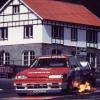R12 To R134a Conversion
Announcements
-
Similar Content
-
Latest Posts
-
By Dose Pipe Sutututu · Posted
Cheapest option, find a NEO head. Put in good springs, decent cams, and send it to the moon. I rev mine to 8600RPM, gets me about 232km/h down the main straight at SMSP bouncing off the limiter in 4th. I've never dared to grab 5th 🥲 -
Gday mate, Personally in my car i run 450kw in an s2 rb25 so also hydraulic lifters and have always run it to 7500 RPM and using some baby 256 poncams with new but stock springs and retainers. While i cant speak on any experience with solid lifters i personally have had no issues with my hydraulic lifters which were just cleaned and set in an oil bath before assembly over 7 years ago. Over 8k RPM is cool IMO and if you are using the stock gearbox or just a box with longer ratios the higher rpm certainly could aid to maintain boost into the next gear as that was always something i struggled with as i have a 3582r also but a hypergear equivalent could aid that issue. In summary i would make a choice on the cam you want to use first then decide which springs and retainers work best with it and then you can toss up if you really need the solid lifters, if the car is mainly street i would learn towards keeping the hydraulic lifters as when installed properly and nothing too hektik going on around them they do the trick.
-
Yucky. Things haven't gotten any better though. Now you have Emerson and Honeywell pushing these massive DCS/Scada things with proprietary hardware. They're not a PLC, they're not a computer, they're a...distibuted PLCish/DCSish monster of thing, that only they can program because they make the barriers to entry for anyone else so fricking high. And their developers are all located in the third/developing world (and India, in case anyone does not include that place in that category) and there are terrible failings of the ESl variety, of the care and common sense variety, and f**king forget about Functional Safety. Not a one of them has any idea what it means to comply with an IEC 615xx series standard.
-
All of the ECU grounds are to the chassis, the IGN grounds are to the cylinder head and i believe all the OEM body harness are left in original locations, im trying to work out if i can tell if the sensor voltage itself is losing any power to it from the very low ECU voltage. But yeah a manual pressure gauge will help in picking which path to actually chase. Also please dont bully my wiring plan i never designed it to be universally understood hopefully it still can make sense to you, im a wiring virgin. 1 thing i have just noticed the pressure sensor in question relays both pressure and temperature, the temperature reading holds nice and steady despite the low ecu voltage but the pressure reading is the one that jumps around alot so maybe it is really a pressure issue? wiring plan.xlsx
-








Recommended Posts
Create an account or sign in to comment
You need to be a member in order to leave a comment
Create an account
Sign up for a new account in our community. It's easy!
Register a new accountSign in
Already have an account? Sign in here.
Sign In Now